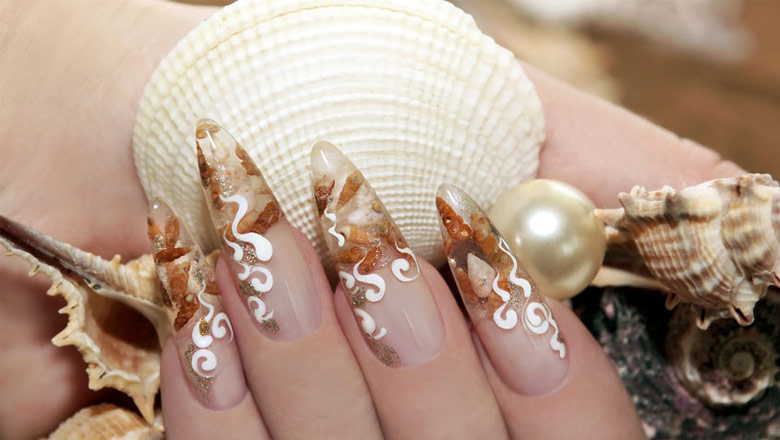
123RF (Marina Kirezhenkova)
With nail builder gel you can construct long and strong nail extensions with less hassle. Builder gel is easier to learn than acrylic power sculpting while still delivering stunning results in the salon or at home. If you’re just starting out, hybrid gels can be even more forgiving to work with so check out a nail extension kit to pick up all the tools you need in one go.
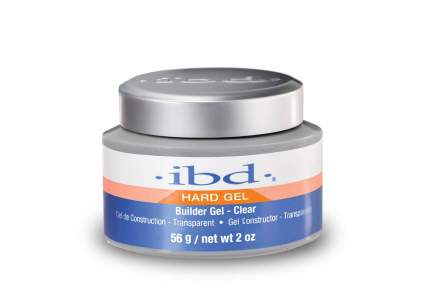
|
Amazon Customer Reviews
|
Price: $23.95 Shop at Amazon | Shop now Read our review |
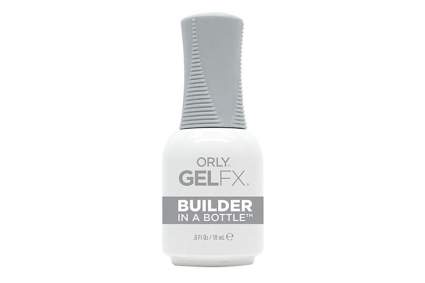
|
Amazon Customer Reviews
|
Price: $26.00 Shop at Amazon | Shop now Read our review |
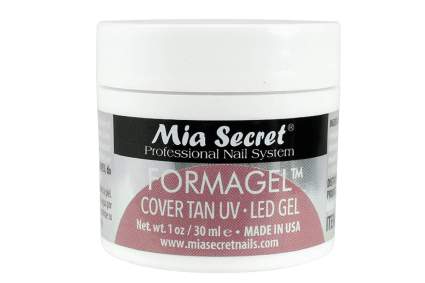
|
Amazon Customer Reviews
|
Price: $14.40 Shop at Amazon | Shop now Read our review |
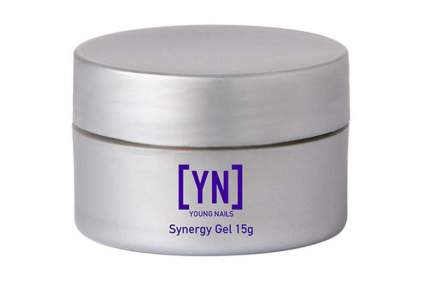
|
Amazon Customer Reviews
|
Price: $44.95 Shop at Amazon | Shop now Read our review |
-
1. EDITOR’S CHOICE: IBD UV Gel Clear Builder
Pros:- Salon-grade
- Available in clear and colors
- Actually clear
- Extremely durable
Cons:- Pricier than some
- Hard to keep in stock
- Can feel a little warm
IBD UV Hard Gel is one of the top brands in the industry and is trusted by both salon nail techs and home nail artists. It cures harder and more durable than most other gels so if you’re having issues with breaking, you might want to upgrade your gel to this IBD formulation.
It has a thick, sticky consistency that is easy to float over your nail surface, self-levels well, and won’t immediately run all into your cuticles. For most purposes, it’s nice and easy to work with, not too thick or too thin. Most find IBD is best suited for applying tips or as an overlay and might be a little too thin for use with nail forms, especially if you’re not curing after each one.
Tip: if you do find the gel is running a bit more to your liking, hold your finger upside (parallel to the floor) for a moment so gravity can settle the gel into a more natural shape with a rounded curve near the center of your nail and then turn it over and give it a quick flash cure under your lamp.
I’m featuring their clear hard gel because it’s impressively crystal clear but they have a range of colors available including white, pink, blush, natural, and ultra-white.
A nail practice hand can be a great tool to help you perfect your technique without having to worry about working on a real client.
Find more IBD UV Gel Clear Builder information and reviews here.
-
2. Orly GelFX Builder in a Bottle
Pros:- Beginner-friendly
- Applies just like nail polish
- Great strengthening overlay
- Can be soaked off
Cons:- Pricier
- No colors to choose from
- Not as strong as traditional gel
- Extensions need many layers
For something completely different and outside the box for hard gel, check out Orly GelFX Builder in a Bottle. Unlike both UV hard gels, Builder in a Bottle has the consistency of gel nail polish and can be applied with a normal nail polish brush. It’s stronger than gel nail polish but not quite as strong as thicker building gels making it a nice middle-ground for people looking to dip a toe into the world of gel extensions.
The thin formula and nail polish bottle make this an ideal product to overlay onto your natural nail for extra strength and durability. If you’re looking to create nail extensions with this, you can do that but keep in mind that it will take a few layers because your coats are so much thinner than a stiff gel would be.
Another huge benefit to this type of builder is that while it might not be as strong as traditional building gel, it can be soaked off with full-strength acetone so you don’t have to worry about filing off your gel.
Find more Orly GelFX Builder in a Bottle information and reviews here.
-
3. Mia Secret Formagel Clear Builder
Pros:- Made in America
- Trusted, well-known brand
- More affordable
- Middle consistency
Cons:- Only one-ounce jar
- Can heat up while curing
- Extensions need thin layers
Mia Secret is a cult favorite brand for acrylic nails so if you love their products, you’ll be glad to hear they also make a UV hard gel line called Formagel. It’s a medium-viscosity hard gel so it isn’t so thick that it won’t self-level for an even finish. Self-leveling does mean there is some movement so if you’re using nail forms to build out or extensions, you’ll want to flash cure it and not wait to have all five fingers done before getting the nail under the lamp. It’s very useful for creating nail extensions as the included video shows.
Formagel comes in a range of colors besides the cover tan featured above including clear, white, and translucent Candy Pink. You want to make sure to give their opaque colors a good long cure for durability.
Find more Mia Secret Formagel Clear Builder information and reviews here.
-
4. Young Nails Synergy Gels
Pros:- Three size choices
- A whole system available
- High quality and long lasting
- Full and partial coverage
Cons:- Pricier than others
- Too specialized for some
- Limited inventory
Young Nails’ Synergy Gel has a whole system of different types of hard gel so you can get the coverage and viscosity you need. They have 14 different options including clear, colors, and different levels of thickness as well as three sizes to choose from: 0.5 ounces, one ounce, and two ounces. For those sizes, it has to be noted that these are the most expensive gels on the list but they are a luxury brand and has their own cult following.
I love that the system has a range of gels including a thin, self-leveling base coat gel, extra-thick Sculpting Gels that won’t run at all, and flexible self-leveling Build Gels that are great for strengthening and overlays.
The YouTube video has one of the owners showing you what each type of gel looks like and how much movement it has.
Find more Young Nails Synergy Gels information and reviews here.
How Is Hard Gel Different From Acrylic?
First off, it's easier to work with.
UV hard gels come ready to use out of the jar or tube, unlike acrylic which requires mixing a powder and a liquid with proper ratios. This also means they don't have the strong smell of acrylic monomer liquid.
A huge benefit of it being light-cured is that it won't dry until you make it dry. This gives you plenty of time to fuss with your design and get it just right. Once you mix acrylic, the hardening chemical reaction is off and running so you can only work with it so long before it hardens on you.
Plus, hard gel nail extensions are actually stronger than acrylic nails. They are denser with a more impermeable surface making them less likely to stain. NailPro notes that hard gels are recommended for hairstylists to prevent hair dyes from staining them the way dyes can stain more porous acrylic nails.
In fact, hard gel is so dense that even acetone can't penetrate it which means these extensions must be filed off. In comparison, acrylic nails can be soaked off.
How Do You Remove Builder Gel Nails?
The price of having nail extensions that can withstand anything, even acetone, is that you can't use regular nail polish remover to get them off. Hard gel, like polygel and nail dipping powder, has to be filed off either manually or with an e-file.
The easiest way to do this is with a nail drill. That might sound a little scary for home nail artists, but they're really not as intimidating as you think. Nail drills are perfect for removing, sculpting, and smoothing hard gel and acrylic nails. Plus, they're great for maintaining thickened natural nails that don't work well with nail clippers. I love my MelodySusie Scarlet Drill because it doesn't take up much space and has hands-free operation.
Do keep in mind that any type of filing or drilling that creates dust which can be not so much fun to breathe in. The CDC recommends always using a nail dust vacuum and there are drills with built-in collectors as well.
What Is Builder Gel?
Non-scientifically, it's pretty much what you'd get if gel nail polish and acrylic nails had a baby.
Also called hard gel or UV hard gel, it's a thick, spreadable gel that hardens to a dense plastic-like consistency under LED or UV light.
Scientifically speaking, according to Dr. Liz Pavlovic, hard gels are comprised of (meth)acrylate monomers, meth(acrylate) oligomers, and photo-initiators. It's these photoinitiators that react to UV or LED light to kickstart a chemical reaction converting the monomers into a hard plastic-like structure.
Fun fact: hard gels were first used on nails in the 1950s when a dentist, (Dr. Frederick Slack) used the acrylate gel solution meant for molding crowns to fix his broken nail. It took almost 40 years for the technology to really break into the nail world because lamps with the right wavelength were hard to come by.
What Can I Use Hard Gel For?
Hard gel can be used for creating extensions with either sticker forms or over tips and to affix 3D nail art gems and charms. It can also be used as a thin overlay on natural nails to strengthen them and because it's not affected by acetone, you can layer polish over it and even remove that polish without affecting your strengthening layer.
What Is the Difference Between Hard Gel and Builder in a Bottle?
Most hard gel is thick and sticky like corn syrup but new thinner formulas have recently come out that you apply just like nail polish. These are particularly great for creating a strengthening overlay on natural nails. If you're using bottle nail builder for extensions, you'll need to layer in a couple of coats.
As is true for all polishes, if comes in a bottle, you're going to want to shake it to make sure it's properly combined. If you haven't checked out the world of vortex mixers, your wrists will thank you.
Is It the Same as Polygel?
Nope, but they are very similar. Polygel is a hybrid that has a much thicker consistency and can be easier to control than builder gel which can flood your cuticles if you let it sit for too long. Polygel is so sticky that you need Slip Solution to manipulate it. Dip your brush in this before attempting to move your gel around and you'll be good. It's kind of like when you're making Rice Crispy treats and you add a little vegetable oil to your spatula to keep it from sticking.
Most kits include slip solution but you can buy it either separately or you can substitute it with rubbing alcohol with a concentration of 70 percent or higher.
How Do I Change the Color of Builder Gel?
They make loads of different colors of gel but the beauty of hard gel is that you can paint over it over and over again with either gel nail polish or regular nail polish.
You can also mix different colors of gel together to form a swirl, marble, or ombre effect, mix in glitters, dried flowers, or mini seashells, or tint clear hard gel with pigment powders.
Do You Need an LED Lamp?
You absolutely need a nail lamp to work with UV hard gel. It's the only way the gel will cure and set rock-hard. They're cheap these days and you can even find ones that fold flat for storage.
Keep in mind that, just like with gel polish, there will be a tacky inhibition layer after you've cured it so you'll need to wipe it off with a little rubbing alcohol.
Helpful tip: If you find your gel is flooding your cuticles while you work, use thinner layers and flash cure them for 30 seconds under LED to just set them before continuing.